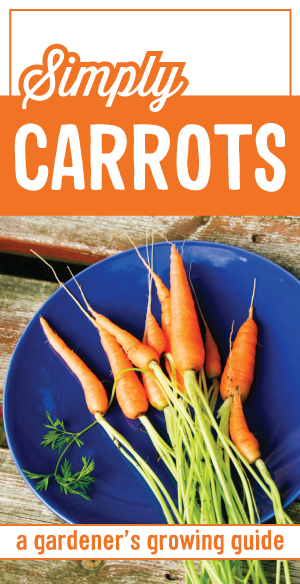
Scientific Name: Daucus carota
Order: Apiales
Family: Apiaceae
Genus: Daucus
Plant Type: Vegetable
USDA Hardiness Zones: 4-10
Soil pH Level: 5.5 - 7.0
Soil Texture: Fertile, Well-Drained & Sandy
Sun Exposure: Full
Appearance Description: Carrots are a root vegetable that is easy to grow. They are a good late season crop. Carrots can be orange or purple. They have tall green sprouts on their tops.
How to Plant:
1. Work the soil until it has a smooth and broken-up consistency.
2. Amend native soil with compost, manure, or any other material.
3. Sow seeds in rows 12-18 inches apart and 1/4-inch deep.
4. Avoid compacting the soil.
5. Water generously after planting.
How to Maintain:
1. Critters love carrots; building a fence may be necessary.
2. Mulch can be added to retain moisture and to keep the roots cool.
3. Water at least 1-inch per week.
4. Remove weeds constantly.
5. Fertilize carrots with a specialized plant food 5-6 weeks after sowing.
How to Harvest:
1. Carrots need about 2.5 months to mature. They are ready when they are at least 1/2-inch in diameter.
2. Carrots can actually be left in the soil until after a few frosts.
3. To remove, loosen the surrounding soil and pull the carrots upward without breaking the green.
Storage Tips:
Always twist off the tops and wash your carrots well after harvesting in order to prevent disease. Refrigerate, can, freeze, or cook with immediately.
Top Varieties:
1. Bolero
2. Nantesa Superior
3. Thumberline
Fun Facts:
1. Carrots are a biennial, which means they will flower and produce seeds if left in the ground.
2. In the past, carrots were grown as medicine; not as food.
3. Carrots contain 87% water.
Related Soil:
Schultz Moisture Plus Potting Mix
Related Plant Food:
Schultz All Purpose Water Soluble
Schultz Flower & Vegetable Extended Feed
Schultz All Purpose Extended Feed
Schultz Granular Tomato & Vegetable Plant Food
Schultz Granular All Purpose Plant Food






